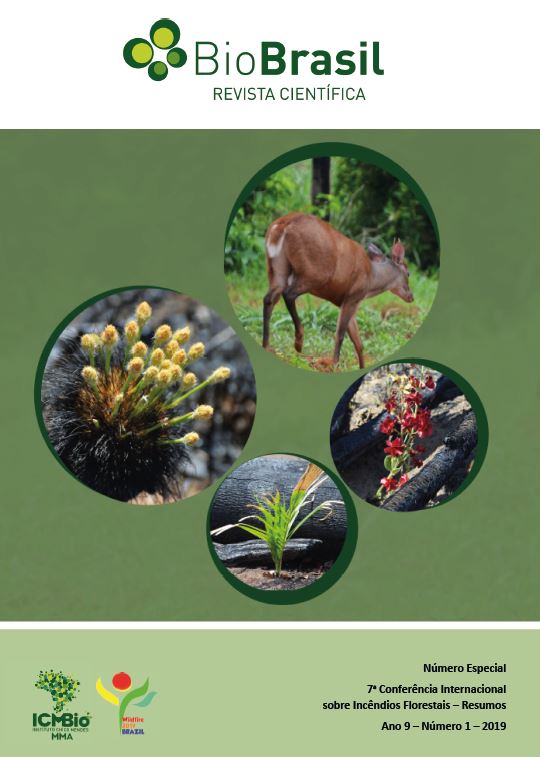To predict fuel moisture contents of Hong-reung arboretum in South Korea
DOI:
https://doi.org/10.37002/biodiversidadebrasileira.v9i1.1410Keywords:
Forest fire, fuel moist contents, forecast, weatherAbstract
Recently, on the Korean Peninsula, large scale forest fire frequently occurs every year from 2017 (Gangneung, Sanchuck), 2018 (Gosung), 2019 (Sockcho, Gangneung). Large scale forest fire can occur along the wind speed, fuel moisture contents, amount of fuel and topography. In particularly weather and fuel moisture contents can be predicted, so it can be used for large scale forest fire early warning system. For these reasons, NIFoS investigated how the fuel moisture contents in Hongneung arboretum changes with weather conditions. To do this, fallen leaves layer were collected at 6 plots in Hongneung arboretum every day from April 23, 2018. Leaves were dried in a Dry oven at 95 ℃, 6 days for investigate the fuel moisture contents. As a result of the survey, fuel moisture contents less than 9%, forest fire risk is very high, was observed 6 days, 9~11%, forest fire risk is high, was observed 48 days, 11~15%, forest fire risk is normal, was observed 146 days, 16~20%, forest fire risk is low, was observed 33 days, more than 20%, no forest fire risk, was observed 117 days. During this period, mean temperature was about 13.1 ℃, mean relative humidity was 63.5%, average maximum wind speed was 1.3 m/s. Precipitation date was 51 days, and amount of precipitation during this time was 919 mm. In addition, were investigated fuel moisture contents increase rate after precipitation, and decrease rate as time goes on. When precipitation was less than 20 mm, fuel moisture contents was average increased about 25.5% and when it was over 20 mm, fuel moisture contents was average increased about 34.5%. Observation data also showed fuel moisture contents increase rate did not exceed 45%. Observations also show that increase in fuel moisture contents due to precipitation has decrease less than 20%, which can occur forest fires 2~4 days after precipitation. In this study, were predicted fuel moisture contents using relative humidity, wind speed temperature, and investigated persist time for suppression effect of forest fire by precipitation.
Downloads
Downloads
Published
Issue
Section
License
Copyright (c) 2019 Os autores mantêm os direitos autorais de seus artigos sem restrições, concedendo ao editor direitos de ção não exclusivos.

This work is licensed under a Creative Commons Attribution-NonCommercial-NoDerivatives 4.0 International License.
Os artigos estão licenciados sob uma licença Creative Commons Atribuição-NãoComercial-SemDerivações 4.0 Internacional (CC BY-NC-ND 4.0). O acesso é livre e gratuito para download e leitura, ou seja, é permitido copiar e redistribuir o material em qualquer mídia ou formato.











